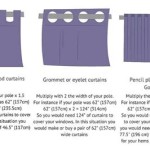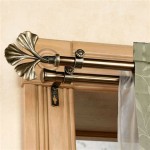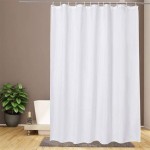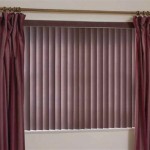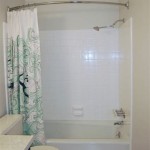Installing Curtain Rods in Drywall
Installing curtain rods may seem like a simple task, but proper installation ensures the rods can support the weight of curtains and prevent damage to the drywall. This article provides a comprehensive guide to installing curtain rods in drywall, covering necessary tools, preparation steps, and installation techniques.
Gathering the Necessary Tools and Materials
Before beginning the installation, gather all the necessary tools and materials. This preparation will ensure a smooth and efficient installation process. Essential tools typically include a drill, drill bits (including a screwdriver bit), a level, a measuring tape, a pencil, and a stud finder. Materials required include the curtain rod, brackets, screws (appropriate for the wall type and rod weight), and potentially drywall anchors if studs are not located in the desired positions.
Selecting the correct screws is crucial for securely fastening the brackets to the wall. Using screws that are too short or too thin might result in the brackets pulling out of the drywall under the weight of the curtains. Consult the curtain rod manufacturer’s instructions for recommended screw types and sizes. Wall anchors are essential when installing brackets where wall studs are unavailable. These anchors provide extra support within the drywall cavity, preventing the brackets from loosening over time.
Locating and Marking Bracket Positions
Accurate measurement and marking are essential for correctly positioning the curtain rod. Begin by determining the desired height of the rod, considering both aesthetic preferences and the curtain length. Measure and mark the desired height on the wall using a pencil. Next, determine the width the curtains will span. Generally, brackets should be placed several inches outside the window frame to allow for full light entry and proper curtain display. Mark these points on the wall with a pencil.
Using a stud finder, locate the wall studs behind the drywall at the marked bracket positions. Marking the stud locations ensures the brackets are secured to the strongest points in the wall, providing maximum support for the rod and curtains. If studs are not located at the desired bracket positions, mark these positions regardless. These marks will serve as the points for installing drywall anchors.
Installing the Brackets and Curtain Rod
If installing brackets into studs, pre-drilling pilot holes at the marked locations is recommended. These pilot holes should be slightly smaller than the diameter of the screws, preventing the wood from splitting and ensuring a secure fit. Align the brackets with the pre-drilled holes and fasten them to the studs using the appropriate screws. Ensure the brackets are level using a level tool, adjusting as needed before fully tightening the screws.
If studs are not available at the marked positions, install drywall anchors. The type of drywall anchor will determine the installation process. Typically, this involves drilling a hole of the appropriate size and inserting the anchor. The anchor expands within the drywall cavity, providing a secure base for the screws. Once the anchors are installed, align the brackets with the anchors and fasten them using the appropriate screws. As with stud installation, ensure the brackets are level before fully tightening.
Once the brackets are securely installed, the curtain rod can be mounted. The specific method will depend on the rod's design. Some rods simply rest on the brackets, while others may require additional screws or clips. Refer to the manufacturer's instructions for the specific mounting procedure. After the rod is mounted, test its stability by gently applying pressure. This test ensures the rod and brackets are capable of supporting the intended curtain weight.
Choosing the Right Drywall Anchors
Selecting the appropriate drywall anchors is crucial for ensuring a secure and long-lasting installation. Different types of anchors are designed for different weights and wall conditions. Plastic expansion anchors are suitable for lighter curtains and general use. Self-drilling anchors, often with metal components, provide a more secure hold for heavier curtains. Toggle bolts are the strongest option for particularly heavy curtains or when installing into hollow walls. Consult packaging information or hardware store staff for guidance on choosing the right anchor for specific curtain weight and wall type.
Dealing with Challenging Installations
Certain installation situations may present challenges. For instance, installing brackets on tile backsplashes or near window trim requires careful planning and execution. When drilling into tile, use a tile drill bit to prevent cracking. Masking tape applied over the drilling point can also help prevent slippage. When working near window trim, measure and mark carefully to avoid damaging the trim. Shims might be necessary to ensure the brackets are flush against the wall if uneven surfaces are encountered. Adjustments to the chosen screw length might also be necessary to accommodate the thickness of the trim.

How To Hang Curtain Rods In Drywall With Anchors Easy Diy Install Youtube

How To Hang Curtain Rods In Drywall Geefix

Signaturethings 2 Easy Step To Hang Curtain Rod On Drywall Like A Pro

How To Install Curtain Rods 5 Simple Steps

How To Install Curtain Rods Best Practices The Shade

Hanging On Plaster Walls A How To For Curtains The White Apartment

How To Hang Curtains Like A Pro

How To Hang A Curtain Rod With Barbara K

How To Mount A Curtain Rod Youtube

A Guide To Curtain Measuring And Installation Tms Menagerie

